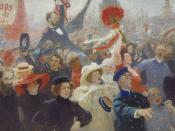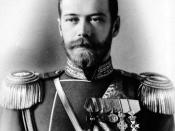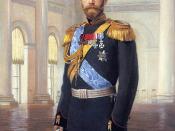Why did the Revolution fail to topple the Tsar in 1905, but succeed in 1917?
The Russian Revolution had a decisive impact on the history of the twentieth century. Its implications and influences went on to effect a huge area and last decades. True to the large impact that it had, it was a large event. It spanned years and included many various groups and individuals. When studying the Russian Revolution it is important to note that it came during a time of change in Russia. Over the forty years preceding 1905, and thirty years following 1917, the Russian Empire underwent huge transformations. This meant that though many events can be seen as part of the Revolution, much of them happened against different backdrops within the country.
Nicholas II did not abdicate and was not dethroned in 1905. However the Revolution of February 1917 did remove him from his position.
When asking why Nicholas II survived 1905 there are many factors to be examined. It is notable that at both times many conditions were extremely similar. Levels of dissatisfaction, large strikes and the country being geared towards a war time economy are all examples. But it is important to see the perhaps less noticeable factors and also the small differences which gave the two events such contrasting outcomes.
The Autocracy, after suffering a humiliating defeat in the Russo-Japenese War, could have been dealt an even harsher blow if the peace terms it was faced with had been more severe than they transpired to be. However, the negotiations, presided over by the American president, Theodore Roosevelt in New Hampshire, were quite lenient on Russia. This allowed Nicholas to save face, pride and also security in his position. #
In 1905, despite the atrocious conditions that workers in the agricultural and industrial...


